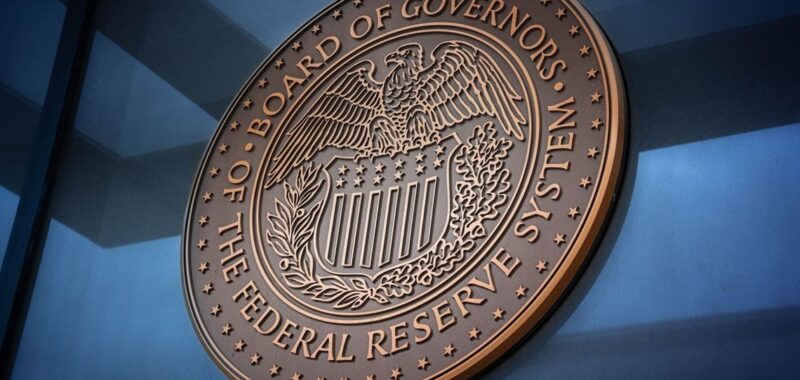After the Federal Reserve chose to hold rates steady at its meeting last week, sparking more criticism from President Donald Trump, Fed governors were once again out on the media circuit, seeking to explain their perspectives on the path forward as uncertainty continues to bloom regarding the state of the economy.
In Iceland early Friday morning, Fed members Michael Barr, John Williams and Adriana Kugler addressed reporters and took questions at the Reykjavík Economic Conference. All three struck a cautious, concerned tone, pointing out that early signs show significant stress on the global economy caused by tariffs and back-and-forth American trade policy.
“Concern is particularly acute for small businesses which are less diversified, less able to access credit, and hence more vulnerable to adverse shocks,” said Barr. Notably, Barr stepped down from his position as vice chair of the Fed early this year, ahead of Trump’s inauguration.
With even more uncertainty around rate cuts this year, the real estate industry—like Trump—are likely hoping to see the Fed move to cut rates sooner than later, as mortgage rates are sitting around 7% and pricing many buyers out of homes.
But tariffs have made the picture more complicated, with housing economists warning bigger shifts in the economy or labor market are possible, potentially causing more pain than high mortgage rates.
At a panel posted by the Chicago Fed featuring Fed member Austan Goolsbee, housing developer Kelli Lawrence said “customers aren’t buying…early in the cycle,” waiting until much closer to their planned move-in rather than planning many months, or even years ahead. That is at least partly due to the general economic uncertainty.
Lawrence added that she doesn’t feel like it is possible to pass increased costs on to buyers right now.
“Affordability is a significant challenge. They can no longer accept increases to the price of their homes,” she said.
Goolsbee asked Lawrence and the other panelists—who represented agriculture, food and manufacturing businesses—what they wanted to tell the Fed about current conditions as decisions are being made.
Lawrence said that “current policies and interest rate environment” are hurting both housing production and demand.
“What data can be monitored to actually assess what’s happening?” she asked.
Stagflation and staying steadfast
Back in Iceland, Kugler provided a more optimistic perspective on the broader economy, pointing to some recent positive data reports, including private domestic purchases, as a reason to remain tentatively optimistic about the economy.
“I take that as a signal that the real side of the economy is still resilient,” she said.
But Kugler added that upward pressure on inflation from tariffs is a reason to remain very cautious. Complicating the picture is the lack of certainty around how long tariffs will persist, requiring the Fed to map out many different scenarios, she said.
Barr affirmed this, while declining to give the probability of a recession.
“I do think that it’s fair to say that the uncertainty around the tariff situation has raised risks both to higher inflation and to higher unemployment that would come from lower growth,” he said. “Tariffs would have a significant effect on both sides of our dual mandate and make it much harder for us if we’re put in a position where we see significantly rising unemployment and significantly rising inflation.”
“We’re not in that phase right now,” Barr added, noting that “tariffs may be quite different” in the near future.
While acknowledging the positive data referenced by Kugler, Barr also pointed to leading metrics that “indicate significant declines in business and household sentiment.”
“The forward looking measures in the soft data are concerning. And we’ll just have to see,” he said.
Williams focused his prepared remarks on price stability. Asked by the event’s moderator why he chose that topic now, Williams laughed.
“I think price stability is foundational. I think we’ve learned through experience…over many decades that without price stability you can’t have economic stability, people can’t make long-run plans, whether you’re planning to buy a house or save for your kid’s school,” he said.
He emphasized that there needed to be a long-term plan that people can believe in, so inflation expectations remain grounded, and that the Fed can do that. Referring back to Kugler’s remarks, Williams described a sort of “baseline view” that there is added risk to slower growth and higher inflation.
“My own view is I expect growth this year to be considerably slower than it was last year,” he said. “Inflation to be higher, and unemployment to move up over the year.”
He added that a lot of market participants are focused on downside risk, but that there remains a general confidence in rates and inflation coming down.
At the same time, the “hard data” on things like inflation and jobs show this is “a good economy, a resilient economy,” Williams said, even though qualitative measures of businesses and consumers show rising concern.
Both Kugler and Williams were asked directly about Trump’s threats, and pressure on the Fed to lower interest rates, as the president has repeatedly called Fed Chair Jerome Powell “Too Late” and a “fool” as he pushes for lower rates.
Kugler declined to address the question, reiterating that the central bank is focused only on its mandate of “maximum employment” and 2% long-term inflation.
Williams said that the Fed’s job is “narrow,” noting they don’t make fiscal policy or trade policy.
“Obviously everybody can comment on whether we get it right or wrong. That comes with the territory of doing public service and doing the work we do,” he said.
Asked if Trump’s comments make his job harder, Williams gave a direct answer:
“No. Not for me,” he said.

